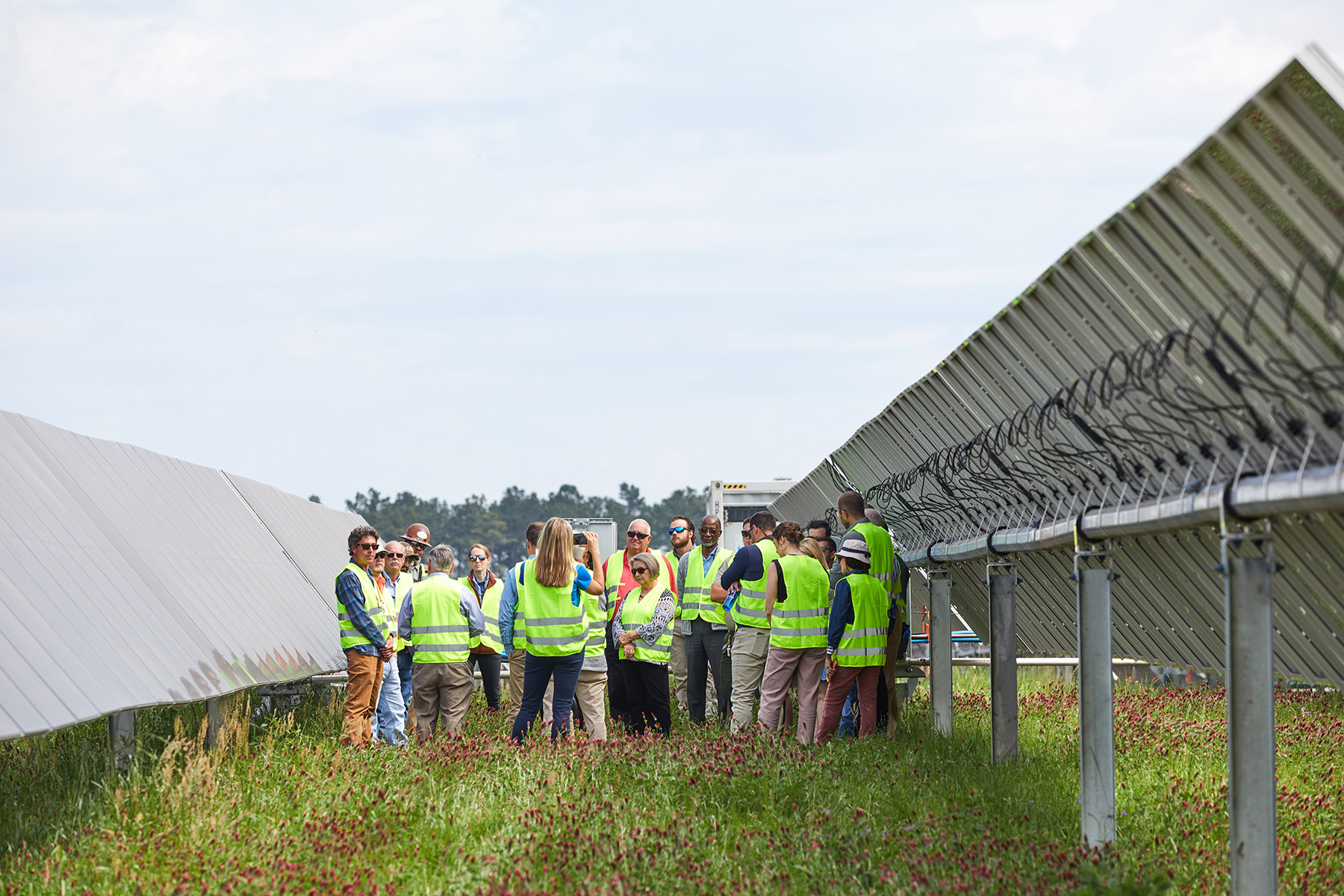Georgetown County, South Carolina is witnessing a rural revival through clean energy. The Lambert Solar Farm, a 250 MW energy infrastructure project from Silicon Ranch, is transforming 3,200 acres of former timberland into an economic engine for the community.
The project has been in the works for a long time. In 2020, Silicon Ranch contracted with local utilities Santee Cooper and Central Electric Power Cooperative, which will pay for the generated solar power. Reagan Farr, co-founder and CEO at Silicon Ranch, told Inside Climate News that it was “a very heavy lift to get through the permitting process. But because of the collaboration with the community, the third project was a very streamlined effort.”
The project was made up of three phases. Phases one and two, which will be completed this year, consist of 200 MW of solar power capacity; and is estimated to bring more than 200 construction jobs to Georgetown County. In December, the county council approved an extension of over 1,000 acres to continue into phase three of the project where an additional 50 MW will be added next year. This phase is expected to add another 200 craft labor jobs. Local hiring is an essential part of the company’s plans. In October, Silicon Ranch partnered with contractor LPL to host a local job fair at SC Works Georgetown. In November, the company attended a job fair for International Paper employees after they announced that they were closing their mill and cutting almost 700 jobs. At the time, Rob Salvino, an economics professor at Coastal Carolina University, said, “The people that are full-time employees, in particular, that are supporting their families, they’re going to have to look for other comparable opportunities. And that is going to be hard to find right around here.”
The benefits go far beyond just construction jobs. Silicon Ranch will invest $200 million into the area to provide clean power and enhanced grid resiliency, with another $60 million budgeted for the final phase. The company will pay over $20 million in local taxes over the project’s 40-year lifetime, providing critical revenue for schools, infrastructure, and public services. This represents a stable, long-term economic foundation that doesn’t fluctuate with market conditions like traditional industries often do.
“We are grateful to the Georgetown County Council and the citizens of Georgetown for their thoughtful consideration and input on this zoning approval. We applaud the community for their decision to move forward with the final phase of our 250MW energy infrastructure project, and we have full confidence that this extension of the Lambert Solar Farm will continue to bolster economic development and encourage further investment in the area,” Silicon Ranch said in a statement.
The project also demonstrates how clean energy can have an immediate economic impact. Currently, contractors are spending $20,000 to $25,000 monthly on local lodging, food, and retail purchases, and that figure is expected to climb even higher as construction accelerates toward completion.
Silicon Ranch is actively demonstrating its commitment to the community. For example, it contributed $10,000 to Black River United Way after Hurricane Ian and provided tables and chairs for the Lamberttown Community Center.
“As the landowner and as the long-term owner and operator of the project, we look forward to being a part of this community for decades to come,” Silicon Ranch promises on its website. “We are committed to helping Georgetown County become stronger, healthier, and more resilient.”
Furthermore, outside of their economic impact in Georgetown, they are also helping power other local economies throughout the United States given that most of the panels will be produced domestically. Silicon Ranch has a 6.2 gigawatt (GW) Master Supply Agreement with Arizona-based First Solar, whose Perrysburg, Ohio facility will provide 90% of the panels for the project. California-based Nextracker will also provide domestically-made trackers through a 4.5 GW Master Supply Agreement.
For a region seeking economic stability after the paper mill’s closure, the Lambert Solar Farm represents energy production and a pathway to sustainable prosperity. In Farr’s words, “Solar is going to be an important part of the energy mix as demand growth continues out across the country, but especially the Southeast. I think you will see more solar in South Carolina going forward.”
This article was created on March 6, 2025 with the assistance of the generative artificial intelligence (AI) tool Claude 3.7 Sonnet, using the linked company websites, press releases, reports, or external media coverage as inputted source material. It was then reviewed, fact-checked, and edited by one or more team members to ensure factual accuracy and consistency with editorial standards before publication. While we strive for precision, reliability, and quality, readers should be aware that AI-generated content may have limitations in contextual awareness and nuance and may not be completely unbiased, consistent, error-free, or up-to-date. We recommend using this content only for informational purposes, as well as independently verifying it or conducting further research to supplement it. If you notice any inaccuracies or have concerns about this content, please contact our research manager at greg@consensus-digital.com.





